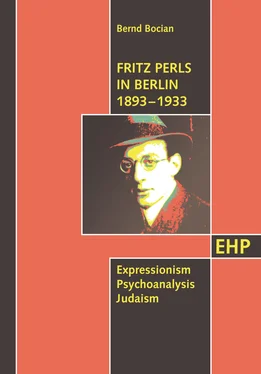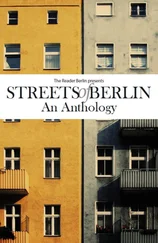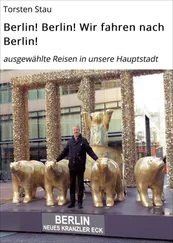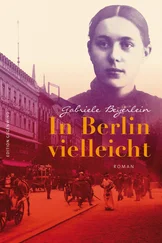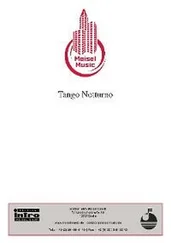Bernd Bocian - Fritz Perls in Berlin 1893 - 1933
Здесь есть возможность читать онлайн «Bernd Bocian - Fritz Perls in Berlin 1893 - 1933» — ознакомительный отрывок электронной книги совершенно бесплатно, а после прочтения отрывка купить полную версию. В некоторых случаях можно слушать аудио, скачать через торрент в формате fb2 и присутствует краткое содержание. Жанр: unrecognised, на английском языке. Описание произведения, (предисловие) а так же отзывы посетителей доступны на портале библиотеки ЛибКат.
- Название:Fritz Perls in Berlin 1893 - 1933
- Автор:
- Жанр:
- Год:неизвестен
- ISBN:нет данных
- Рейтинг книги:3 / 5. Голосов: 1
-
Избранное:Добавить в избранное
- Отзывы:
-
Ваша оценка:
- 60
- 1
- 2
- 3
- 4
- 5
Fritz Perls in Berlin 1893 - 1933: краткое содержание, описание и аннотация
Предлагаем к чтению аннотацию, описание, краткое содержание или предисловие (зависит от того, что написал сам автор книги «Fritz Perls in Berlin 1893 - 1933»). Если вы не нашли необходимую информацию о книге — напишите в комментариях, мы постараемся отыскать её.
Fritz Perls in Berlin 1893 - 1933 — читать онлайн ознакомительный отрывок
Ниже представлен текст книги, разбитый по страницам. Система сохранения места последней прочитанной страницы, позволяет с удобством читать онлайн бесплатно книгу «Fritz Perls in Berlin 1893 - 1933», без необходимости каждый раз заново искать на чём Вы остановились. Поставьте закладку, и сможете в любой момент перейти на страницу, на которой закончили чтение.
Интервал:
Закладка:
The concept of self developed by Fritz and Lore Perls as a couple along with Paul Goodman involves something comparable, namely, a self that is in the »middle mode« (Perls et al. 1996, 376), neither passive and idle nor active and deliberate, but rather productive and creative, much like an artist or a child that is absorbed in its work. This concept, which also attempts to overcome the Freudian duality of primary process and secondary process (see Bocian 2000, 38 f.), is not merely a question of the aesthetic state one experiences when beholding beauty, as it is for Schiller, but involves the moments when experience and action coincide. Which is to say, moments when individuals find themselves engaged in a dance with the circumstances – in play, during artistic creativity, while making love, or in the unfolding of a spontaneous, intense human encounter. It is a question of the »beautiful experience of aesthetic-erotic absorption, when the spontaneous awareness and muscularity drinks in and dances in the environment as if self-oblivious, but in fact feeling the deeper parts of the self« (Perls et al. 1996, 261).
3. Early Influences
3.1 A Family from the Eastern Reaches of the German Empire
Friedrich Salomon Perls was born in Berlin on July 8, 1893, as the second child and first son of Amalie and Nathan Perls. The course of his family’s social development was typical of Jewish families who came to Berlin. A large majority of them came to the metropolis of Berlin from the eastern provinces of Prussia and the countries of Eastern Europe, turning Berlin into the city with the largest Jewish population in the German Empire. They started small, in other words they first moved into the impoverished eastern section of the inner city, the so-called »Scheunenviertel« (lit. barn section), that had been the longstanding first port of call for Jews from the East. The section was never an all Jewish quarter, not to mention a ghetto, as most of the authors 17who write about Gestalt therapy refer to the place where Perls was born (see Geisel 1981).
At the end of the 19 thcentury the percentage of Eastern Jews living in Berlin was not as high as during and especially after the First World War, when masses of Eastern Jews from the Russian and Polish regions flocked to the city and the Scheunenviertel in particular. These Eastern Jews had been recruited as workers or had fled the turmoil of civil war and the pogroms in the countries of the former Russian Empire, and they were now stateless. Many of them were only passing through, although time and again a number of them would stay in Berlin, or had made Berlin their ultimate destination to begin with. It was only after 1918 that the Scheunenviertel developed its traditional characteristic features: the crowds of Eastern Jews, the small shops and restaurants, the club houses of orthodox Jewish groups, and the official institutions of the reformed Jewish congregation. All of this merged with the demimonde and underworld of petty crooks and prostitutes that were based there as well, and resulted, respectively, in an either attractive or repulsive mix. This special neighborhood in the center of Berlin also serves as the setting for the story of released convict Franz Bieberkopf in Alfred Döblin’s novel »Berlin Alexanderplatz.«
In his later biographical recollections, Perls himself referred to the section as a »Jewish neighborhood« (Perls 1977, 61), while at the same time writing that he really didn’t remember those early days anymore. His ideas or those of his wife were probably influenced by the well-known image of the Scheunenviertel in the years following World War I, as discussed above. After the first Russian Revolution (1905-1907), however, there was an influx of Eastern Jews in the streets, and they probably accounted for the people Perls experienced as foreign when he encountered them downtown during his youth. »The East-European Jews with the caftans and payis (long whisker curls) that I saw in my youth were uncanny, frightening, like monks, not belonging to my world« (Perls 1977, 123). This was a typical reaction, as an anecdote related by Berlin native, Ernst Lissauer, reveals. As Lissauer was standing in front of his »Gymnasium« 18in Berlin together with several classmates, a man dressed in a caftan and wearing payis approached them and asked, »Don’t you have any Jews in Berlin at all?« To which Lissauer immediately replied, »No« because »the man was using the word for something different than us« (Lissauer in Kampmann 1994, 431). Berlin’s assimilated Jews, who had often been living in Germany for generations, found Eastern Jews every bit as alienating as other Berliners did. Moreover, Eastern Jews posed a disconcerting and therefore unpleasant reminder of one’s own origins. Relations between German Jews and Eastern Jews were characterized by sympathy and a readiness to help, as well as a sense of superiority and aloofness.
Around the year 1895, there were a total of 86,152 Jews living in Berlin proper, excluding the surrounding areas that constituted greater Berlin. That accounted for 5.1 percent of Berlin’s population (see Rürup 1995, 192 f.). As mentioned above, at the time Perls was born the percentage of Eastern Jews who had fled to Berlin from foreign countries and usually entered Germany illegally was low. No doubt, a significantly larger number of Jews were arriving from the former Polish territories, who now qualified as citizens of the German Empire. After the partitions of Poland at the end of the 18 thcentury, with Russia, Austria, and Prussia each annexing part of its territory, the regions of Posen and Silesia belonged to Prussia. Perls’s parents stemmed from these eastern provinces of the German Empire. Nathan Perls was born on February 6, 1857, in Katowice (German Kattowitz); Amalie Perls, née Rund, on November 29, 1958, in then Huta Laury (German: Laurahütte) in Silesia. 19The date of their arrival in Berlin remains unclear. In Fritz Perls’s early years, his grandparents were still alive, and among them his grandfather regularly visited the synagogue and at any rate participated in the life of the congregation, as Perls reported.
The Jewish congregation in Berlin was well-to-do, and the majority of its members were modern reformed, that is, they had become more similar to the Protestants in their rituals, with organ music, singing, and prayers conducted in German. There were countless religious and social institutions spread across the city and one central synagogue in Oranienburger Strasse that had been dedicated in 1866 and seated 3,000. The religious and ideological poles of the community were formed by Adass Jisroel, the orthodox religious community which, with its neo-orthodox rites and its own rabbinical school, represented a minority within the life of Berlin’s Jewish community. On the other side, there was the University for Jewish Studies founded in 1872. Thus, Berlin saw the emergence of both modernized orthodox rabbidom and the scientific study of Judaism as a historical and cultural phenomenon. In these respects, Judaism in the modern world owes much to its German pioneers (see Meyer 1992, 114 f.). The neo-orthodox rabbinical seminary and the University for Jewish Studies were both located on Artillerie Strasse (now Tucholsky Strasse) within the Scheunenviertel.
3.2 The Perls Family. »Creeping up the Middle-Class Ladder«
Amalie Perls delivered her three children at yearly intervals. Since her first daughter Elisabeth, visually handicapped from birth, was born in Berlin in 1891, we can assume that the parents arrived in the capital from Prussian occupied Poland a relatively short time before. Nathan Perls had probably been influenced by the Enlightenment while he was still in the East and had culturally assimilated himself. He belonged to the second generation of the emancipation era. By contrast, Perls’s mother Amalie was religious, celebrated the Jewish holidays, observed the laws and kept a kosher kitchen. Since her husband ate food that was forbidden to Jews, the couple ate separately, which only increased the distance between them and aggravated marital tensions (see Gaines 1979, 2). Living conditions were poor in the Scheunenviertel, with its small cramped streets. Hygienic conditions in particular were dubious. Berlin suffered from a housing shortage anyway, and had a notorious reputation for the deplorable living conditions in its tenements.
Читать дальшеИнтервал:
Закладка:
Похожие книги на «Fritz Perls in Berlin 1893 - 1933»
Представляем Вашему вниманию похожие книги на «Fritz Perls in Berlin 1893 - 1933» списком для выбора. Мы отобрали схожую по названию и смыслу литературу в надежде предоставить читателям больше вариантов отыскать новые, интересные, ещё непрочитанные произведения.
Обсуждение, отзывы о книге «Fritz Perls in Berlin 1893 - 1933» и просто собственные мнения читателей. Оставьте ваши комментарии, напишите, что Вы думаете о произведении, его смысле или главных героях. Укажите что конкретно понравилось, а что нет, и почему Вы так считаете.
